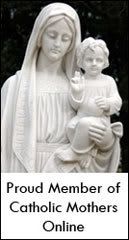- haiku -- 5-7-5 syllables usually dealing with nature
- limericks -- 5-line verses where lines 1, 2, and 5 rhyme and 3 & 4 rhyme
- rebus --poem, paragraph, sentence, riddle where some of the words are pictures or syllables
- concrete poem -- where the poem takes the shape of its subject
- lantern -- 5-line poem shaped like a Japanese lantern
- acrostic -- the first or last letters of each line spell word or phrase appropriate to the poem
- villanelle -- a French poem always 19 lines with two different sets of repeating lines (line 1 is repeated on lines 6, 12, and 18) and line 3 is repeated on lines 9, 15, and 19. The second line of each stanza rhymes throughout the poem
- sensory -- takes an abstract subject and describes it as it tastes, smells, fells, sounds and looks like (in any order).
In addition to types of poetry, Cleary also describes (through wonderful examples) various types of literary devices -- alliteration, personification, palindrome, pun, simile, and spoonerism.
And if that's not enough, he also explains different types of rhyme schemes including: couplet, feminine rhyme (a rhyme of two or more syllables in which the first syllable is the strongest), iambic, internal, macaronic (rhymes made from using foreign words), masculine (a one-syllable rhyme or the stress is on the last of the multisyllabic words), and triple rhyme (rhyme with three syllables).
WHEW! And the poems are great. They may not have understood all the literary and poetic devices, but they sure liked the poems.
My kids particularly liked this example of a riddle in a poem (it took them a minute to get it!):
My Brother Joe
My brother Joe steals.
My brother Joe hits.
I know he's not safe when he's out.
There's sometimes foul play
In the things that he does.
Can you tell what I'm talking about?
Enjoy some poetry with your kids today!




 ...
... 



No comments:
Post a Comment